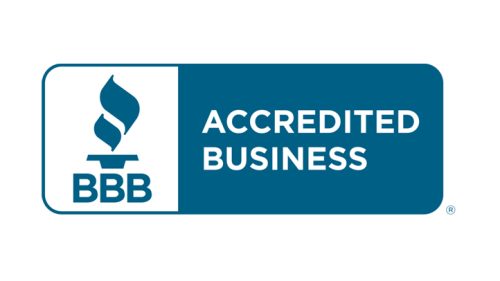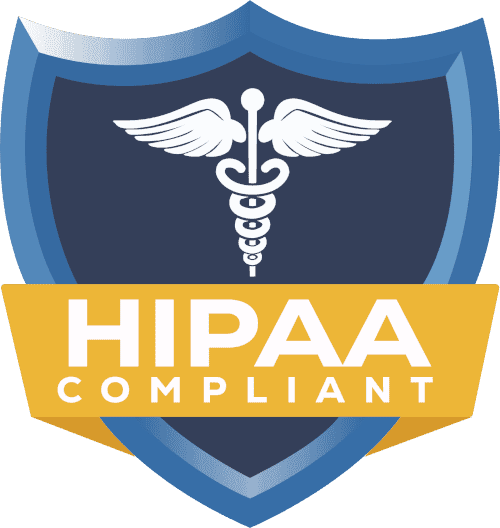Difference between Medicare and Medicaid Credentialing

In addition to clinical responsibilities, healthcare practitioners must complete extensive paperwork to meet credentialing requirements.
The purpose of these programs was to provide easily accessible healthcare services to every individual, especially seniors and disabled individuals.
The basic difference between these standards is that they serve different groups under different protocols. To get a better understanding of Insurance credentialing differences, it is necessary to differentiate the two.
One has the criteria of a specific age group to become eligible. The other deals with people who have limited financial resources. The difference between costs also sets them apart from one another.
Don’t know the difference between the two? You are at the right place. Here is the complete information you need to know about the Medicare and Medicaid programs. Let’s dive into the details of both.
Overview of Medicare Credentialing
Medicare is the health insurance in the US. The people 65 years of age or older, as well as those under 65 years with certain disabilities, are covered by Medicare.
Before moving to the Medicare credentialing, let’s have a quick review of what Medicare covers.
It generally covers four parts:
- Part A covers inpatient hospital care, skilled nursing facility care, and home health services.
- Part B covers outpatient care and preventive services.
- Part C (Medicare Advantage) includes enhanced benefits.
Part D covers prescription drug benefits.
Medicare credentialing involves verifying providers’ qualifications to ensure they meet the standards required to serve Medicare beneficiaries.
Benefits of Medicare Credentialing:
- Credentialing grants providers access to nearly 66 million Medicare beneficiaries, enabling increased patient volume and practice growth.
- Medicare credentialing minimizes the risk of claim denials or legal penalties. Providers can submit claims with confidence.
Main Steps in Medical Credentialing:
- For the preparatory process, you can refer to CMS’s official Medicare enrollment resources.
- You should have an NPI (National Provider Identifier) before putting in an application for Medicare credentialing.
- The next step is enrolling in Medicare through PECOS (Provider Enrollment, Chain and Ownership system) using the required documentation and professional information. Medicare Administrative Contractor (MAC) reviews your application.
- Once you have enrolled, you have to follow the specific credentialing guidelines and discipline to maintain your eligibility status.
- Processing time is approximately 60-90 days.
- Revalidation time is 5 years. Keep track of that. Missing the track of time means a problem in claiming your eligibility.
Overview of Medicaid Credentialing
Medicaid is the state program that deals with people who have limited financial resources. It also covers children, disabled individuals, and pregnant women. Medicaid covers a large portion of Americans, though eligibility and services vary significantly by state.
However, benefits and eligibility criteria vary by state. Eligibility is often determined by Modified Adjusted Gross Income (MAGI).
The specification of federal law makes a person eligible for Medicaid if the household income is below 13% of the federal poverty level.
Let’s have a look at the Medicaid plans. Although services vary depending on the state, the common ones include inpatient and outpatient department services, clinic visits, laboratory and diagnostic tests, and some home health plans.
The process of confirming that healthcare professionals are qualified enough to meet the requirements for Medicaid services is Medicaid credentialing.
Benefits of Medicaid Credentialing:
- Increased patient exposure and database.
- More trust among patients due to compliance with legal policies.
- Access to Medicaid billing can enhance revenue for service reimbursements.
- Medicaid-approved fee schedules make adherence to compensation easier.
Main Steps in Medicaid Credentialing:
- There is a difference in Medicare vs. Medicaid provider enrollment documentation. You must study the enrollment processes of your state before applying.
- For Medicaid credentialing, the first step is to collect the necessary documentation, considering your state requirements. These commonly include certificates and licenses, TINS, and provider agreements.
- Complete the government payer enrollment process by submitting the enrollment application on the Medicaid website of your state.
- After reviewing, the next step is to validate the eligibility of the healthcare provider for legal purposes.
- You will get an official Medicaid provider number. Maintain compliance with the credentialing standards.
Key Differences in Requirements & Process
| Medicare Credentialing | Medicaid Credentialing | |
| Age Group | Covers the 65 years or older individuals Individuals younger than 65 with any disease or illness. | Need to follow the state Medicaid enrollment process. |
| State Dependency | Covers families and persons with low socioeconomic status. Children and pregnant women are also among the beneficiaries. | State affects the requirements and services. |
| Cost | Pay some expenses in the form of premiums and deductibles. | Do not pay for services. |
| Enrollment | Require PECOS enrollment | Need to follow state Medicaid enrollment process. |
Challenges with Each Type
To enjoy the benefits of Medicaid and Medicare credentialing programs, you must know that it is not as easy as it seems. Certain insurance credentialing differences and denials can come in your way.
The possible challenges that you can encounter during the credentialing process are discussed next.
Your test starts at the first step. Beginning with the completion of extensive documentation for enrollment purposes is quite tiresome. You have to be extra careful in this area, as missing or outdated documents can increase the chances of rejection.
No matter whether you are going with Medicare or Medicaid credentialing, both processes require an ample amount of time for processing. This can cause delays in dealing with the patients.
Keeping an eye on the renewal process is demanding. You have to pay extra attention to keep your data updated and renewed to enjoy privileges.
When conducting credentialing of healthcare professionals. Strict compliance with the state, federal, and payer standards is essential for a streamlined process.
Failure to talk back to Medicare or Medicaid when they reach out for additional documents can put your application at risk.
The new updates and policies related to credentialing need specific attention. Missing out on an update can harm you in the future. The best way to keep yourself updated is by joining credentialing forums, subscribing to Medicare and Medicaid newsletters, and attending compliance workshops.
Which Credentialing is Right for Your Practice?
Stuck between Medicaid and Medicare credentialing? Let us make it easy for you. Certain factors help in making the decision easier. First, the practice state had a great impact on Medicaid services. Decide smartly where to pursue your practice.
There is another scenario that may help you out. Look, if you are eligible for both the Medicaid and Medicare credentialing. In that case, there is a Dual Eligible Special Needs Plan. The best part is that you can avail yourself of the benefits of both Medicare and Medicaid programs in one plan.
Here are tips to streamline enrollment in Medicare and Medicaid—especially helpful for first-time applicants.
Is it your first time getting enrolled in Medicaid and Medicare? No worries. We’ve got you covered. The following tips will help in getting the enrollment done without any hindrance.
Medicare Enrollment:
- For the first time signing up for Medicare enrollment, it is crucial to keep track of the Initial enrollment period dates. IEP includes 7 months: 3 months before the 65th birthday, the birthday month, and 3 months after the 65th birthday.
- Keep track of all the essential documents and certificates required during the enrollment application.
- Decide whether you prefer Original Medicare (Parts A & B), administered by the federal government, or a Medicare Advantage (Part C) plan offered by private insurers.
- Choose the plan wisely, considering the health care services you must use during the year. Explore different Medicare plans and estimate what you must pay and what you will get.
Medicaid Enrollment:
- Figure out the eligibility criteria. Medicaid is focused on providing healthcare services to a specific income class. Go through the income and asset requirement criteria set by the Medicaid Program.
- Gather all the necessary personal information, financial documentation, and residency proof. Try to fill in the application form without any errors. Attach the supporting documents.
- Proofread the Medicaid information to avoid any resulting queries.
- Ensure timely response to updates or notifications during the appeals process.
- Once approved, it’s critical to comply with Medicaid eligibility requirements and report any documentation updates promptly.
Conclusion
Following Medicare and Medicaid credentialing is more than just reading the articles. Adopting an organized and practical approach, following compliance standards can help to get it done in time. Treat your patients without any hassle.
Hope this article has helped in understanding the difference between credentialing, enrollment, and privileging. If you still have any confusion, please reach out to us for assistance with Medicaid and Medicare credentialing support services.
Get ready for fast credentialing with the smooth services of Credex Healthcare. Contact us today! You put your complete focus on patient care, while we focus on streamlining your credentialing process.
Frequently Asked Questions:
- Is Medicare credentialing harder than Medicaid?
There is no specificity stating that one is harder than the other. Both of these have their own challenges.
Here we are summing up the basic challenges that can help you decide which is harder. Medicare credentialing is a federal program that allows the use of standardized requirements.
Medicaid is a state-dependent process that does not follow any standard protocol, having diverse screening procedures and timelines.
- Can I be credentialed with both?
Usually, one credentialing application is enough. However, if you wish, please verify that you meet the eligibility criteria for both programs. However, two different practicing locations and billing using two tax IDs will be done.
- How long does Medicare credentialing take?
The Medicare provider enrollment application typically takes approximately 40 days to complete. Moreover, other factors, such as the compactness of the application and the presence of any errors, also affect the timeline.
On the whole, Medicare credentialing typically takes between 90 and 120 days. Again, other factors like state reviewing or missing documentation can affect the timing of the procedure.
- What is a Dual Eligible Special Needs Plan (D-SNP)?
The people who are eligible for the Medicaid and Medicare programs are dual eligible. For such individuals, there is a single plan that offers the benefits of both programs.
It helps to provide managed care to the individuals who hold dual eligibility.
- How do I check my Medicare Provider enrollment status?
To check your enrollment status, you should be aware of the MAC (Medicare Administrative Contractor) serving your area.
Locate the “Provider enrollment” status on the MAC and enter your Application Tracking number and other required details on the tab. You will get the enrollment status within seconds.



















